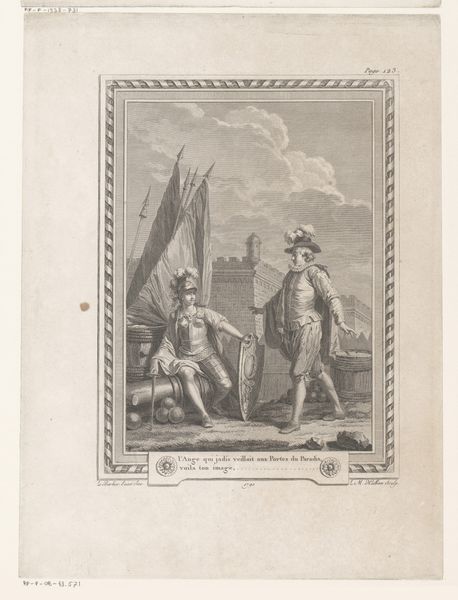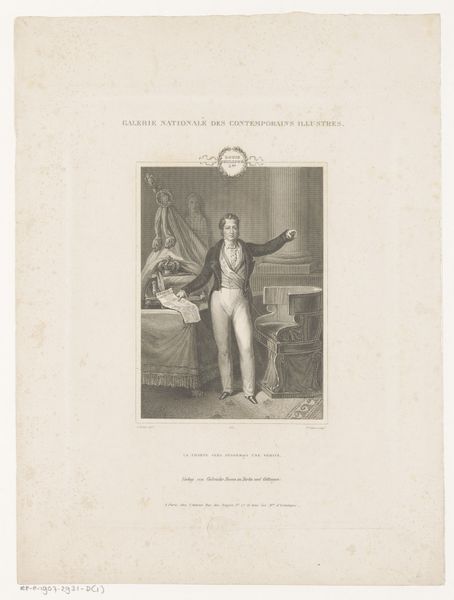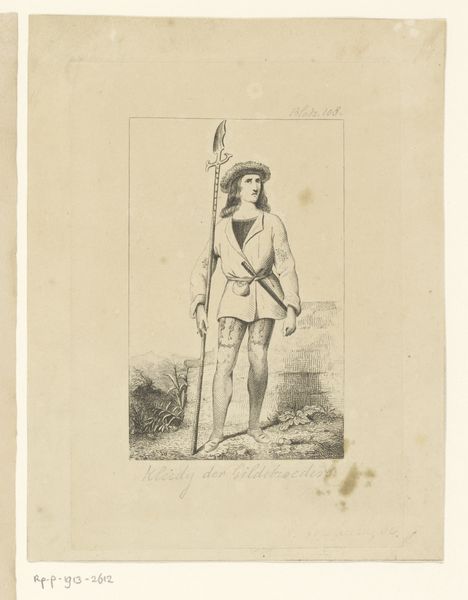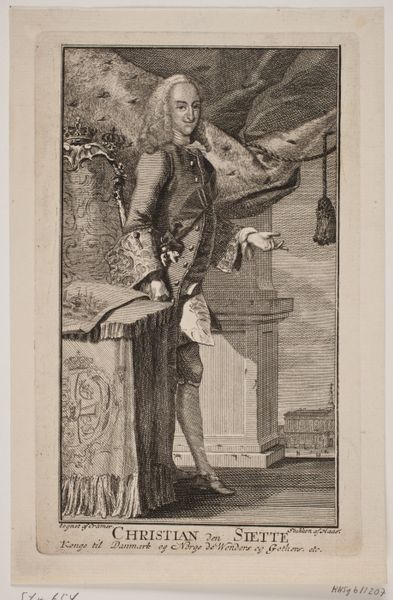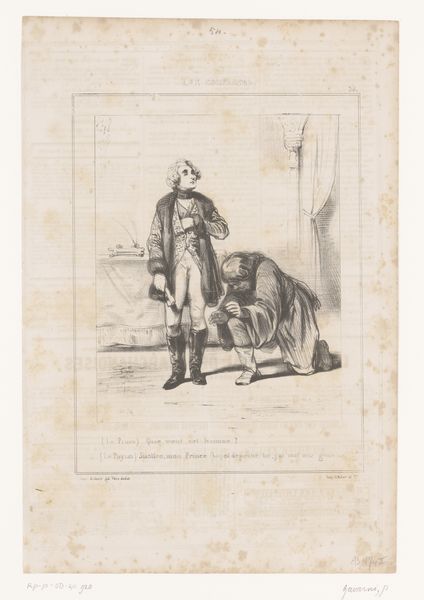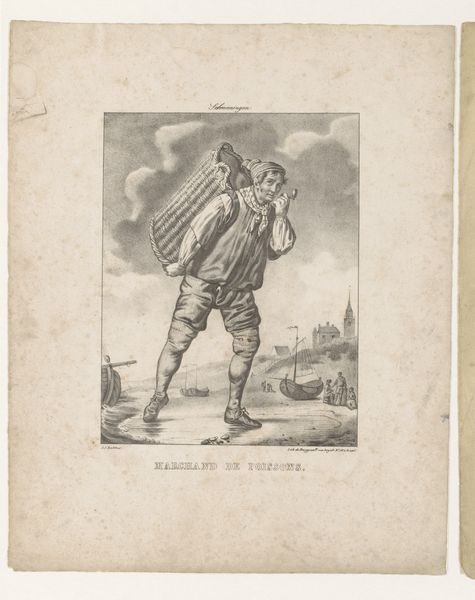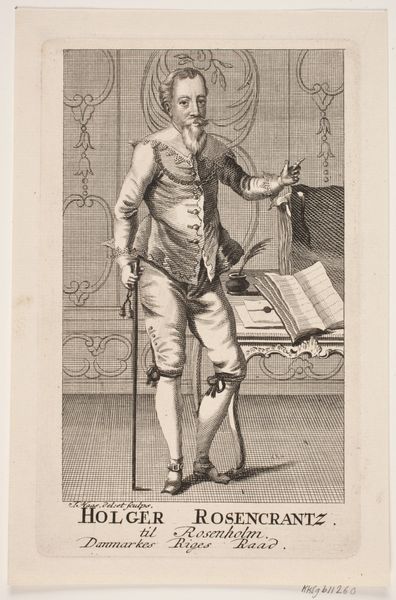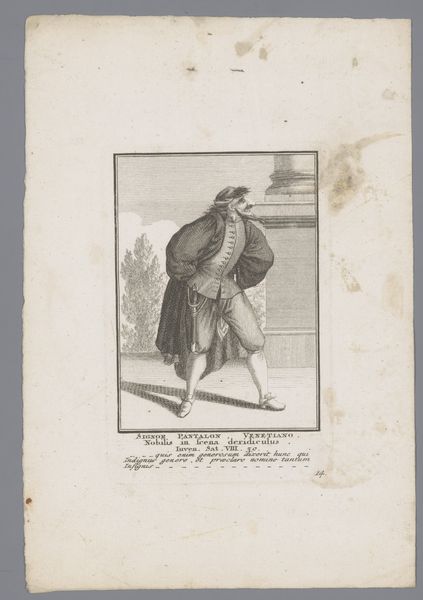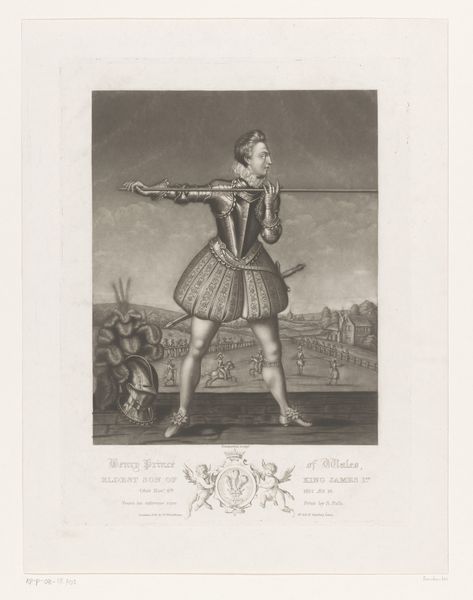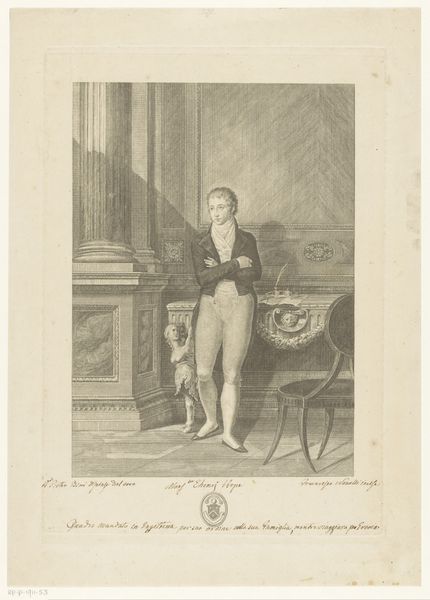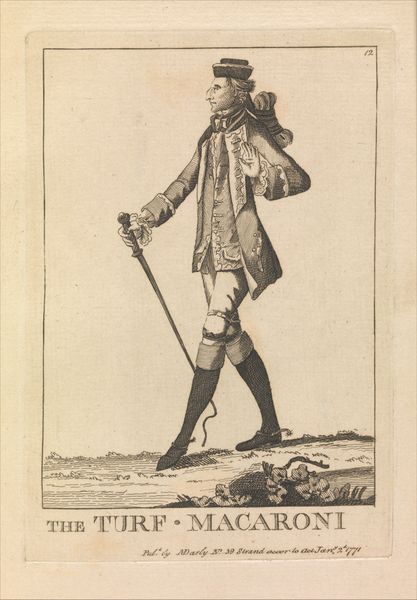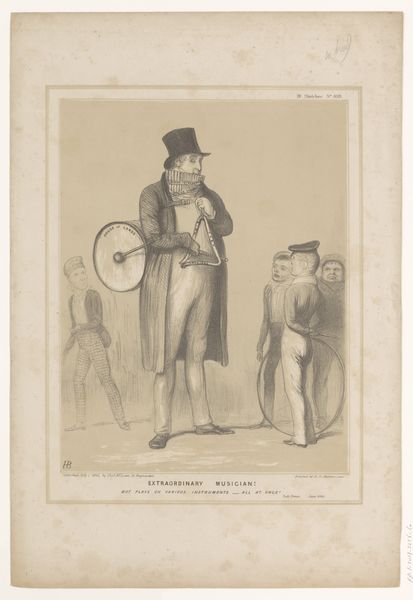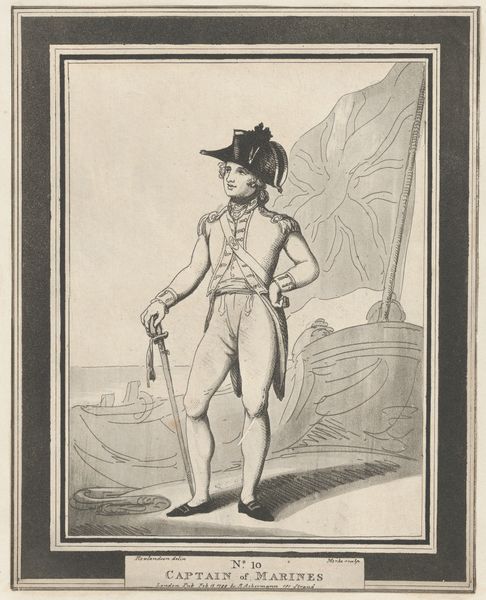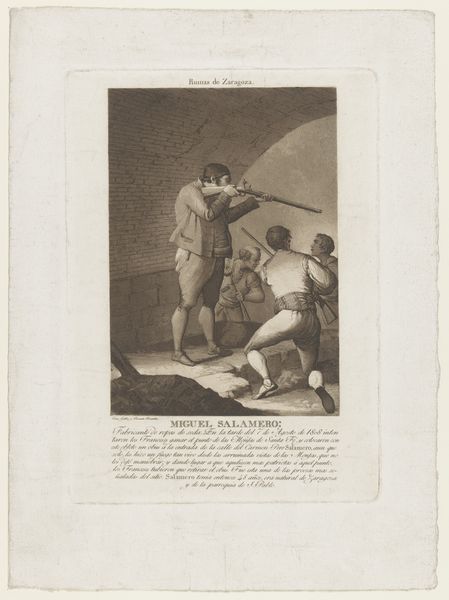
print, engraving
#
portrait
# print
#
history-painting
#
engraving
#
realism
Dimensions: height 342 mm, width 210 mm
Copyright: Rijks Museum: Open Domain
This print of Tadeo Ubon, a Spanish war hero, was made by Juan Galvez sometime between the late 18th and early 19th centuries. It is rendered in a monochromatic palette through the technique of etching, a process rooted in craft. In etching, a metal plate is coated with a waxy, acid-resistant material. The artist then scratches an image into this coating, exposing the metal beneath. When acid is applied, it bites into the exposed lines, creating grooves. These grooves hold ink, which is then transferred to paper under pressure. The fine lines and subtle gradations of tone achieved through etching beautifully capture Ubon's likeness and the architectural backdrop. The linear quality of the etching emphasizes the subject's steadfast posture, while the textures evoke the scene's historical context. Prints like these democratized art, making images widely accessible. Beyond aesthetics, it reflects a shift in the means of production. Through this printmaking process, Galvez transformed an act of heroism into a commodity, available for consumption and commemoration.
Comments
No comments
Be the first to comment and join the conversation on the ultimate creative platform.
